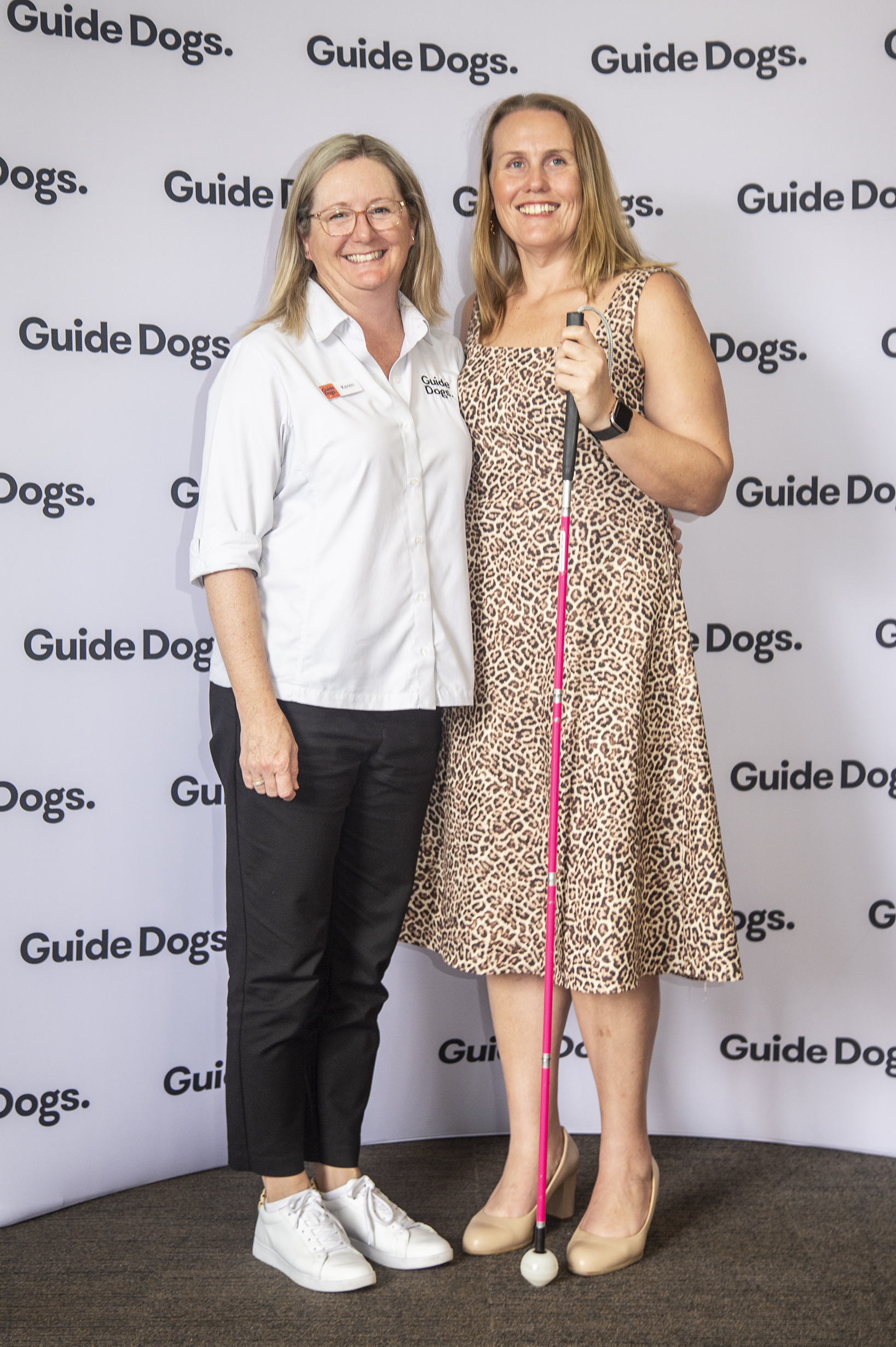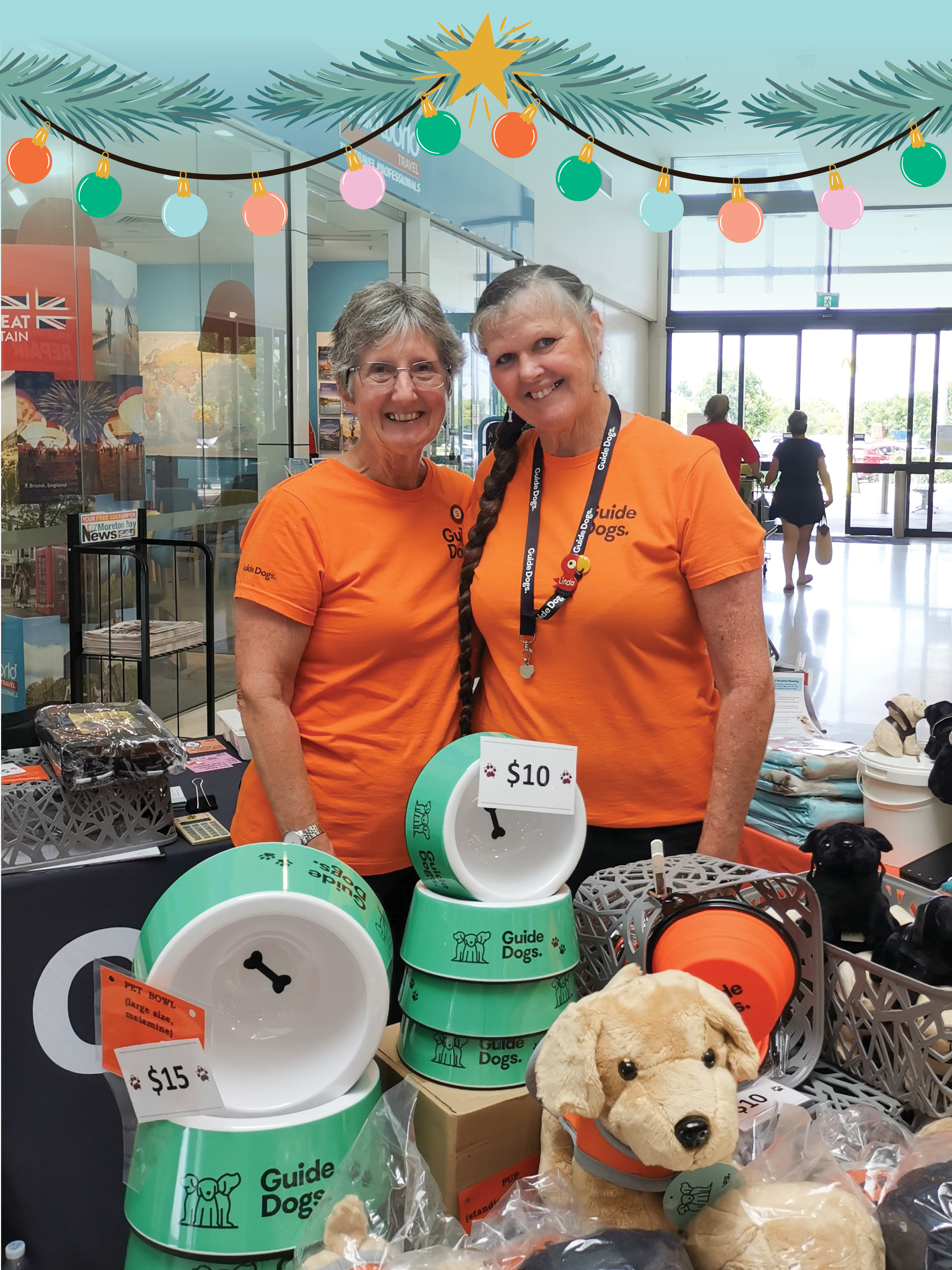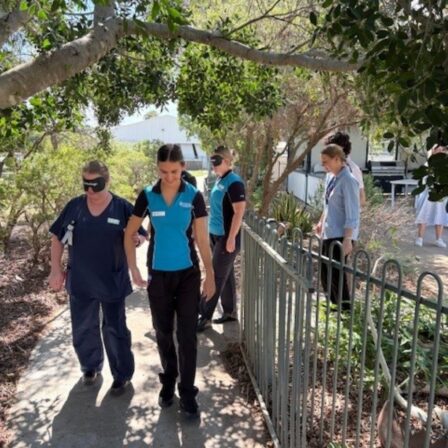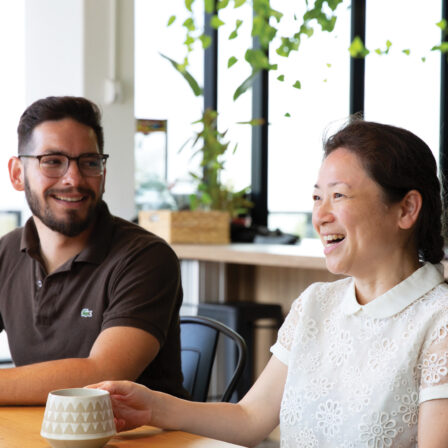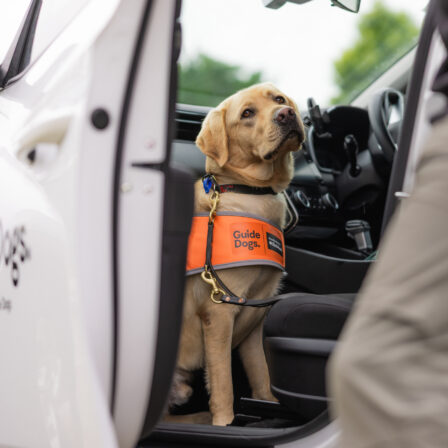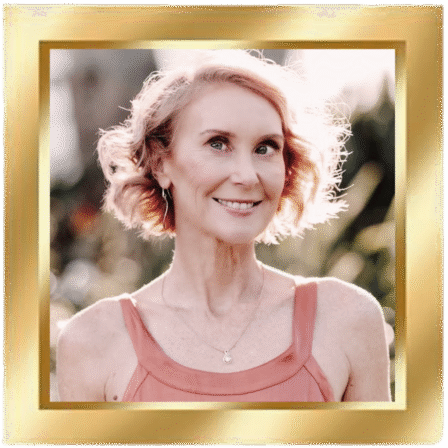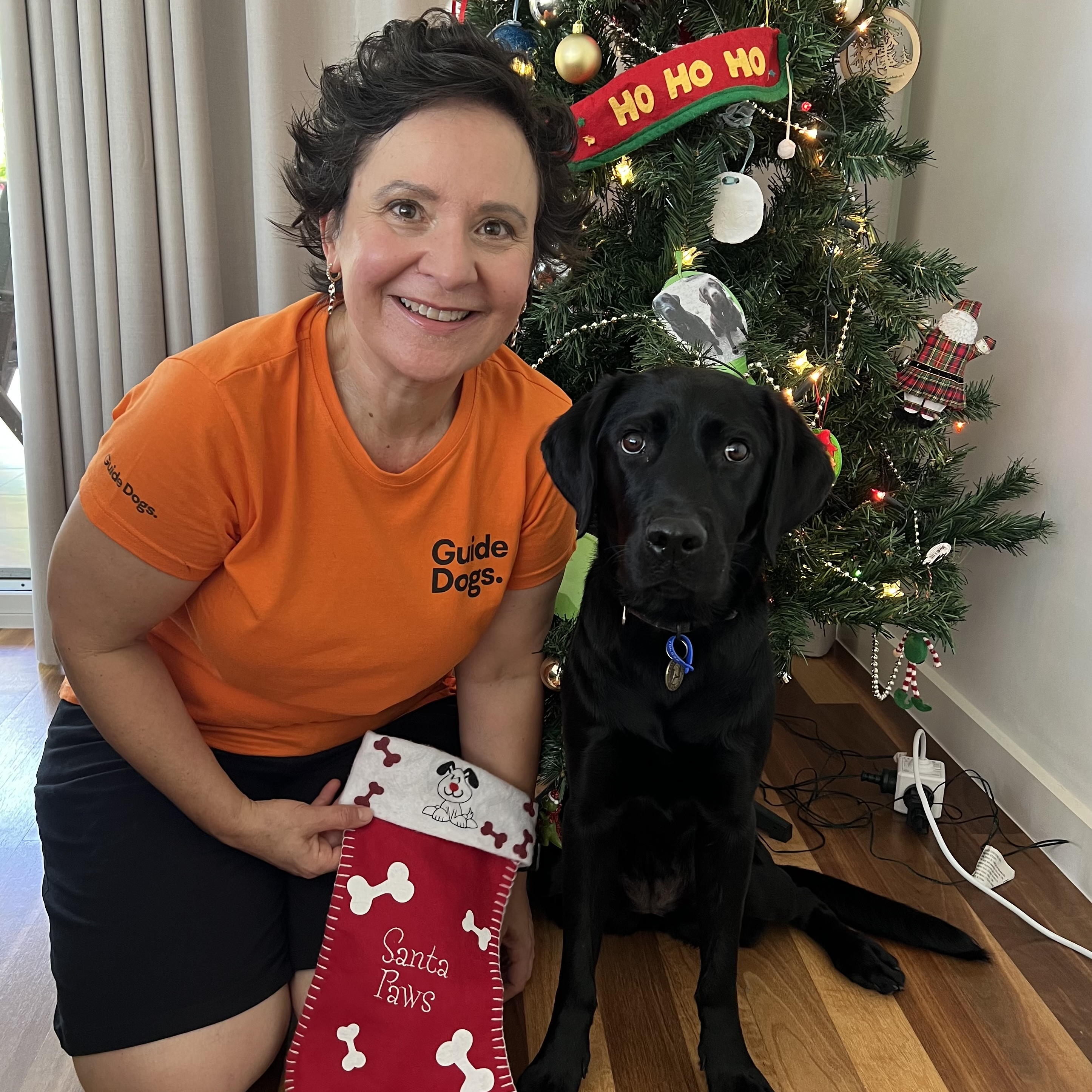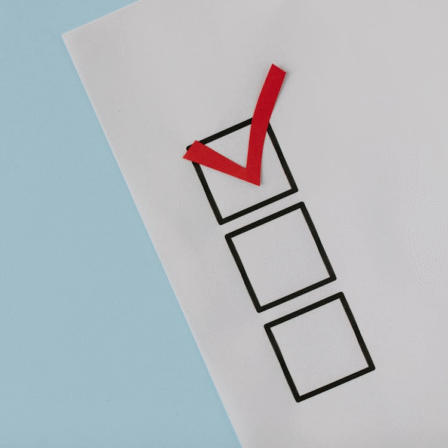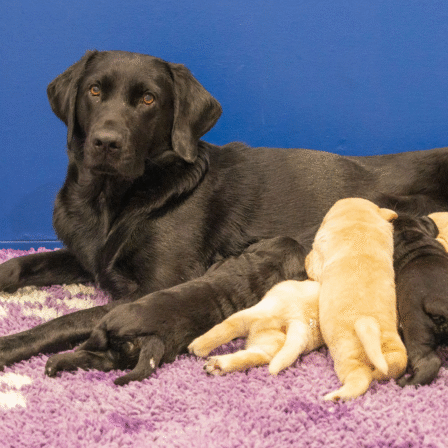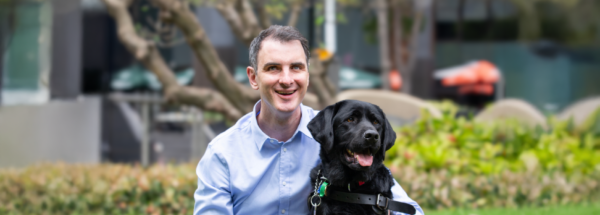News
Meet Guide Dogs team member Karen
In this photo, Karen (left) is standing next to one of her orientation and mobility Clients (right) who is holding their White Cane and smiling in front of a Guide Dogs media wall.
We sat down with Orientation and Mobility Specialist, Karen Drew, to introduce readers to our team here at Guide Dogs Queensland and the amazing work they do.
Karen is an ex-teacher with 20 plus years of experience working in primary schools across NSW and Tasmania. When Karen and her husband moved to Canberra in 2018, she took the opportunity to change careers and studied with Guide Dogs in Canberra.
In 2019/20, Karen completed her Master of Disabilities (Sensory Disabilities) course and worked in Canberra for Guide Dogs NSW/ACT. Now in sunny Queensland, Karen is a Certified Orientation and Mobility (O&M) Specialist and valued member of the Guide Dogs Queensland team.
From teaching, what lead you to pursue a career in sensory disabilities?
Our daughter was born with low vision, so I have had an interest in this area for 20 years. The idea to change my career began in 2017 when I was lucky enough to travel with the Australian Blind Cricket Team on a tour for three weeks in India. My husband was the coach at the time. During that trip I met people with varying degrees of low vision or blindness. I was fascinated by everyone’s ability to get on with it and to enjoy life. Those athletes were uni students, lawyers, massage therapists, musicians, teachers, coaches, NDIS consultants but above all, great humans!
Do you know anyone with a sensory disability?
In the very early years of my teaching career there was a student in the Grade 1 class who was learning to read and write with Braille. He had minimal functional vision and he used to put the white paper right up to his face in order to see the black marker that was printed on the page. He quite often had dark smudges on his nose from the black marker. This student had a wicked sense of humour (for a 6 year old) and he always laughed about his marker-smudged nose!
I had regular conversations with his Braille Teacher and was fascinated by the way he was learning his sounds, letters and words the same way as the other students in his class but also in the tactile format. His teacher told me at the time that I should re-train, but I told him outright that I didn’t want to study again. If I only knew what the future would hold 20 years later!
What does an average day as an O&M look like?
There is never an average day for an O&M! Every day is varied! I work with clients from four to 91 years of age. Two clients with the same eye condition diagnosis do not have the same O&M needs. Basically, Orientation is where you are in your environment and Mobility is moving around. I assist clients to become independent with their O&M needs. Once the client has decided on their most important O&M goals, I start to work on a program to assist them.
It could include learning the orientation to their new workplace, a walking route to work, catching a bus/train to school, navigating the school playground safely, learning to use the Long Mobility Cane, walking to their letterbox, using traffic lights or pedestrian crossings to cross roads. I know I have done my job when the client safely and independently can travel to where they need to be without needing my assistance.
What do you love most about your job?
Changing lives! When I see a client make progress. From feeling isolated because they are too scared to leave their own home, to independently travel while using a Long Cane.
What are some of the challenges you face as an O&M?
Tired legs! As I work with clients who need to move, I walk a lot every day. I always wear comfortable shoes and fill my backpack with a water bottle and my Long Cane. I am constantly looking out for my clients and making sure we are keeping safe. Teaching clients to catch a train (mind the gap), cross a road (listen for vehicles) or descend stairs (hold the railing) while using a Long Cane and avoiding obstacles can be challenging. But very rewarding!
What would you say to someone who might be recently diagnosed with low vision or blindness?
I gently remind them that they are the same person as they were before their diagnosis who will need to learn to do things differently. I let them know that they are not alone. We are here to assist them.
